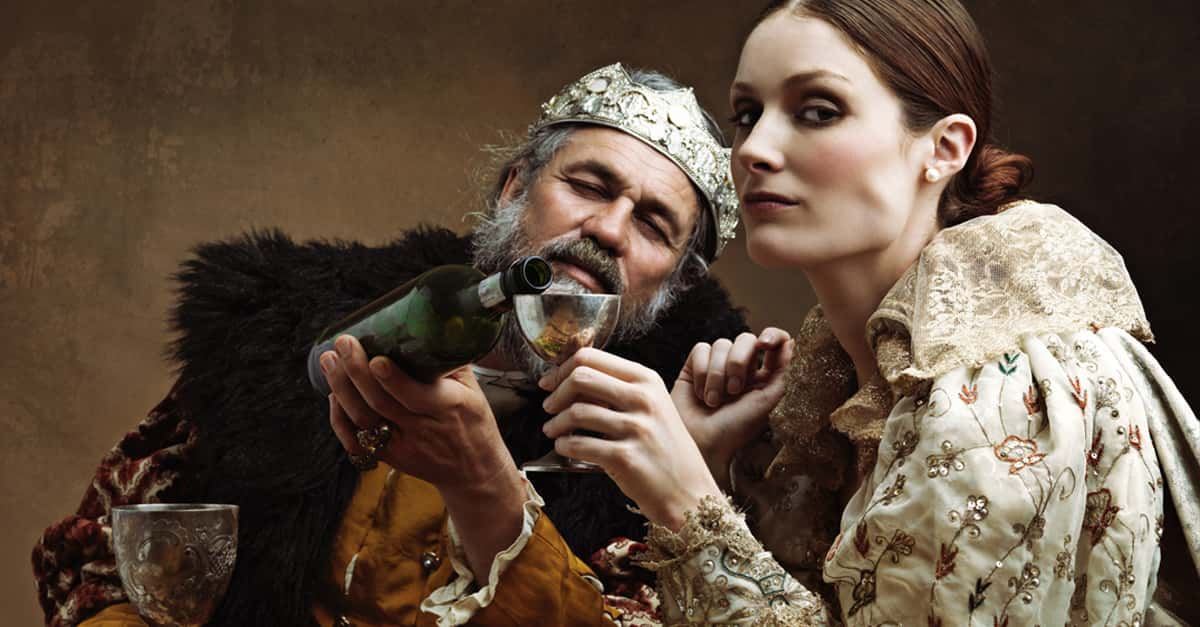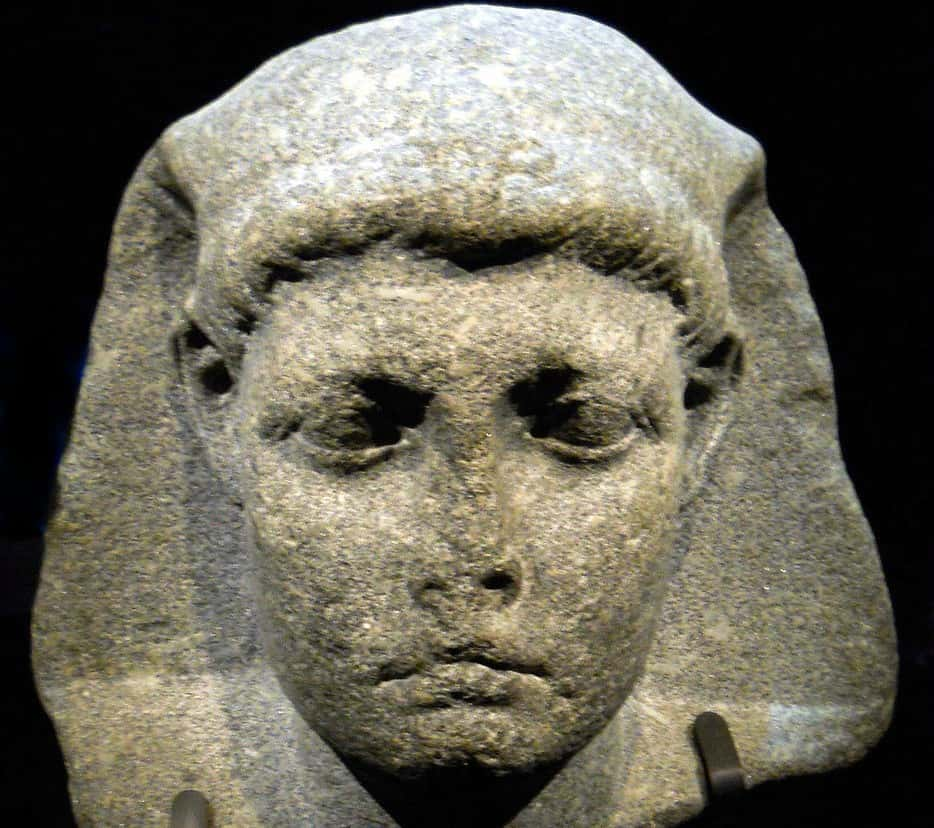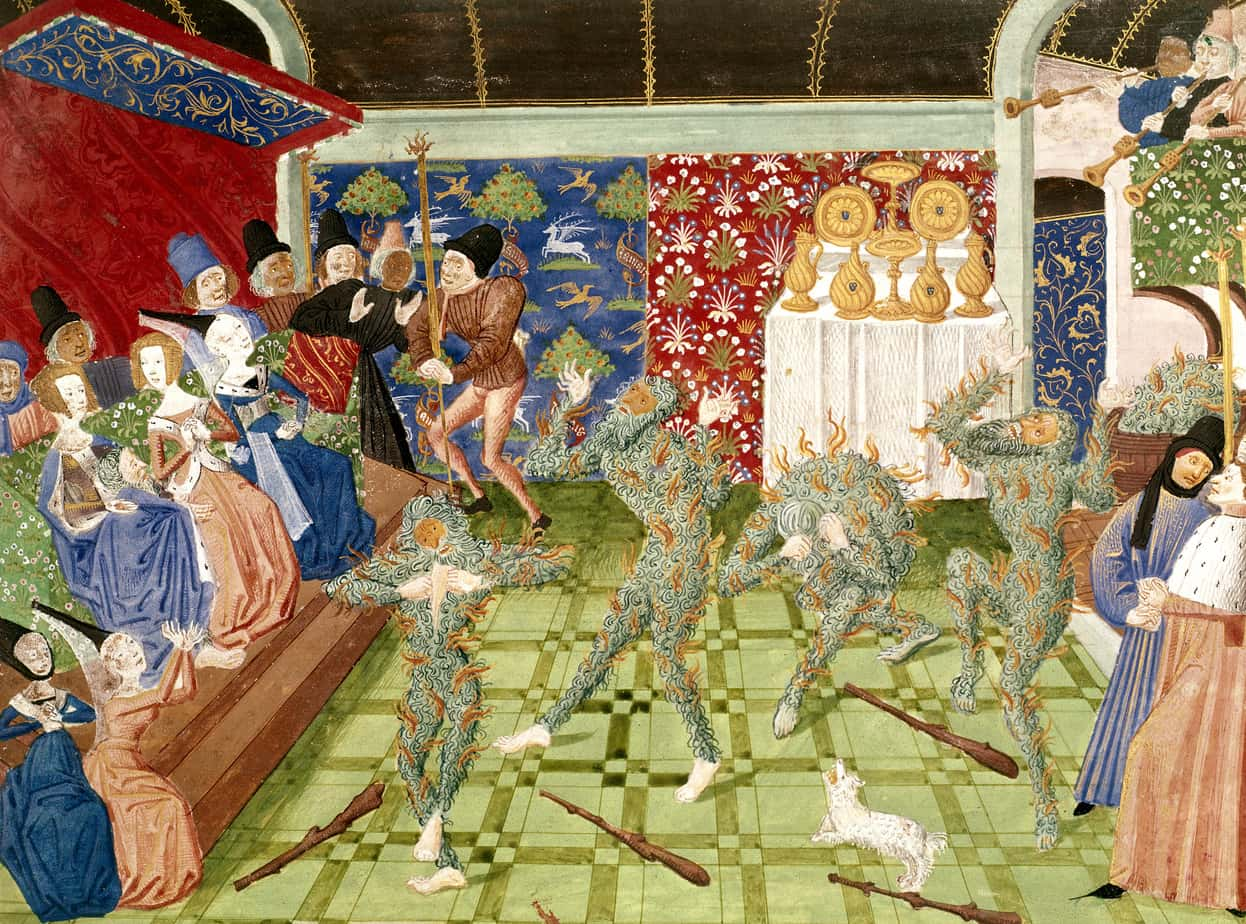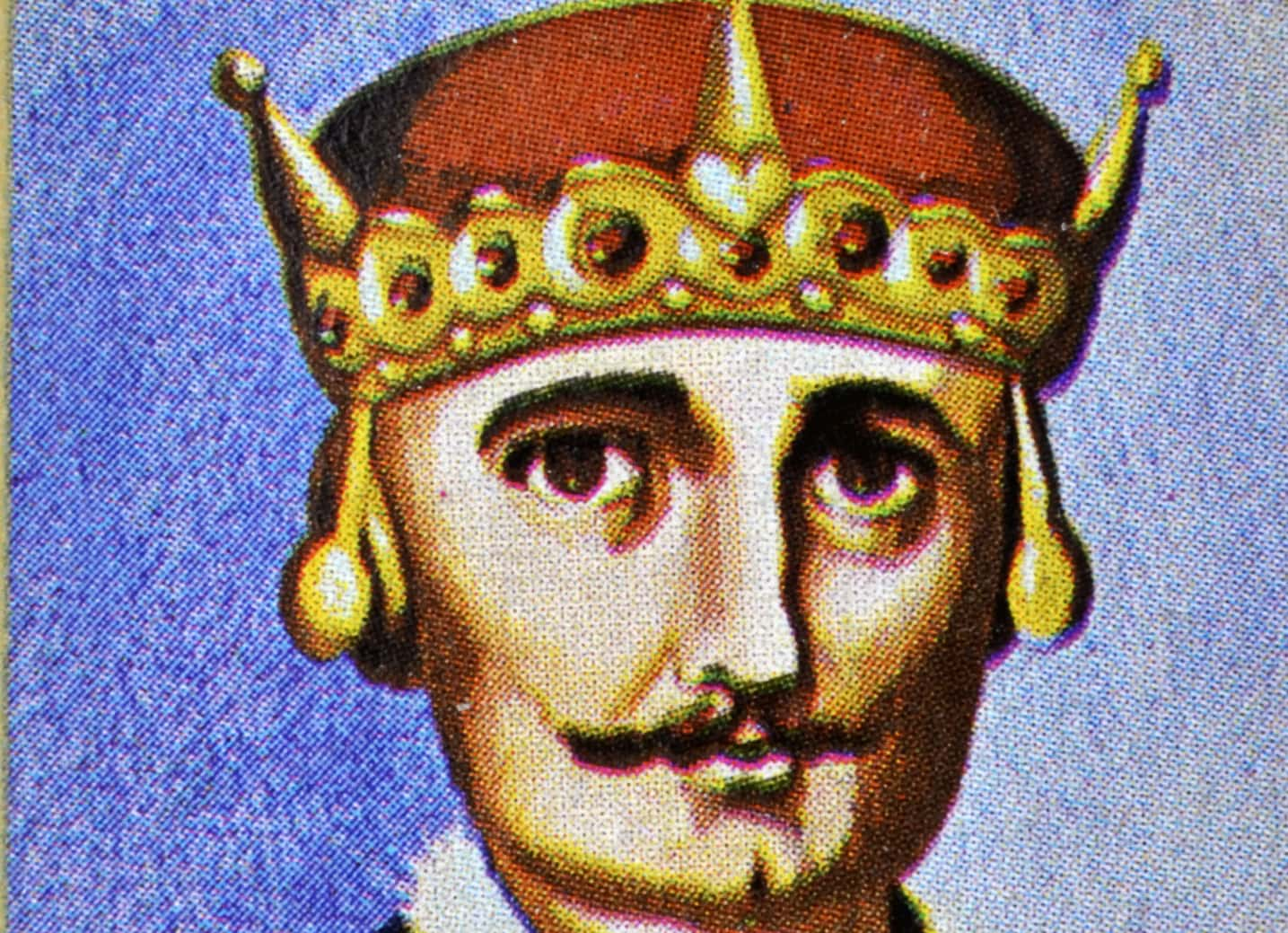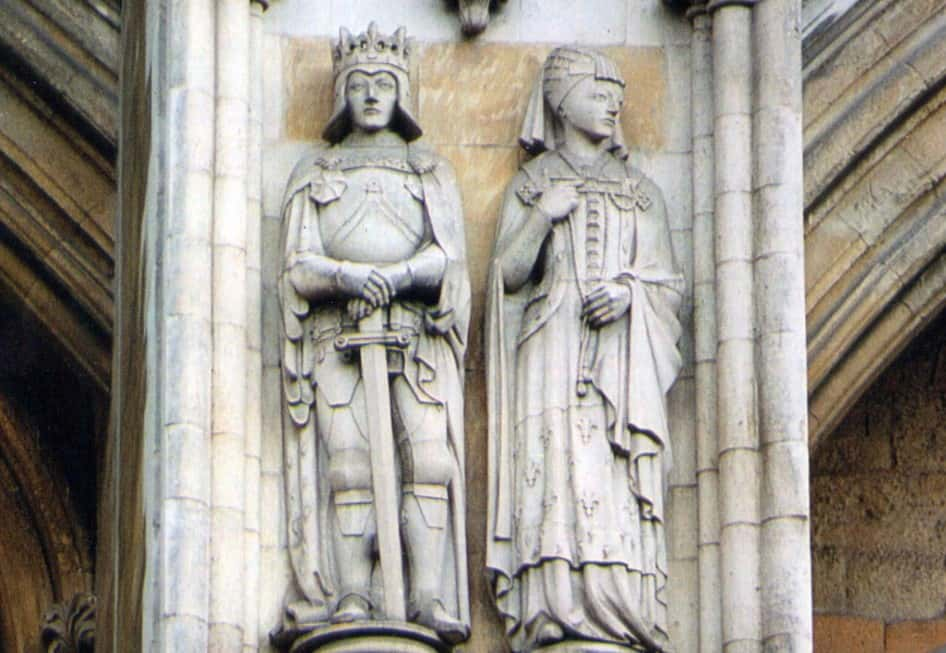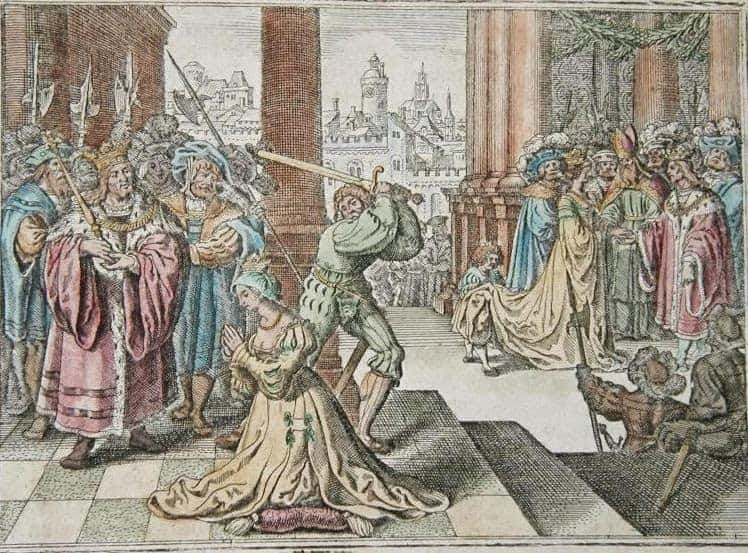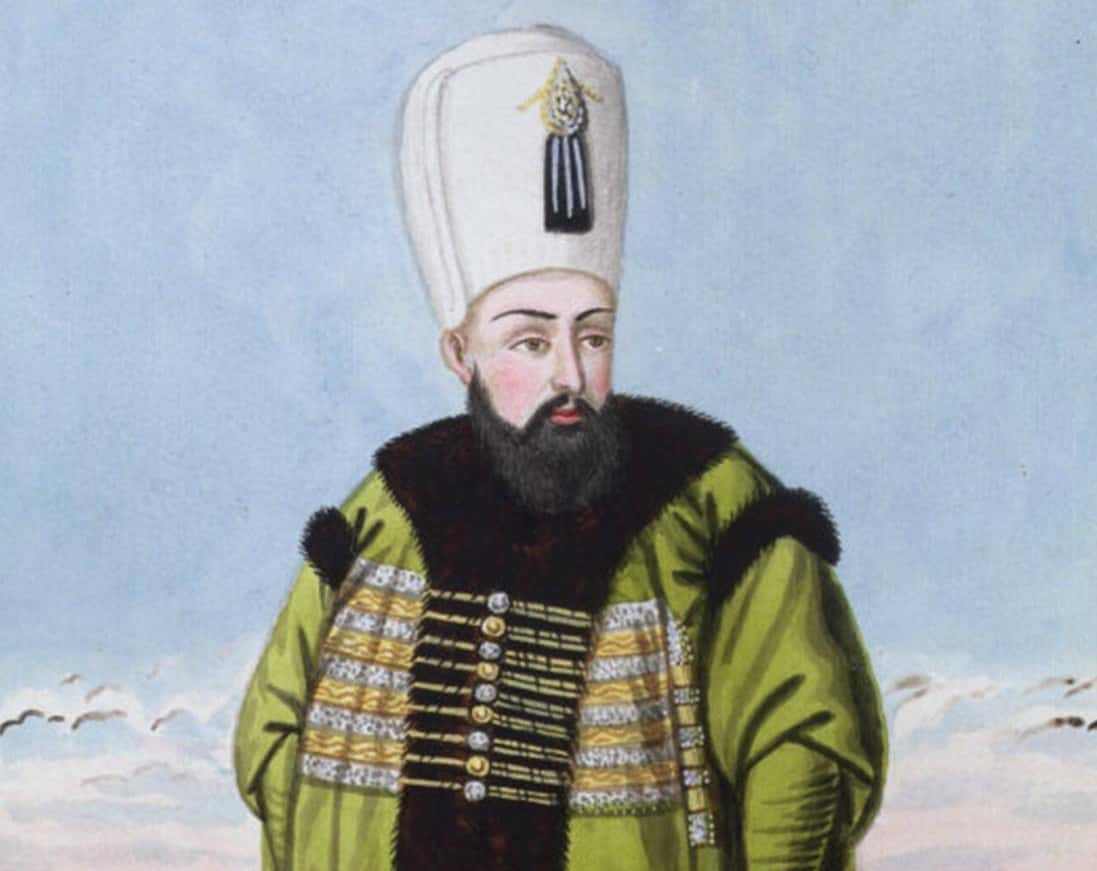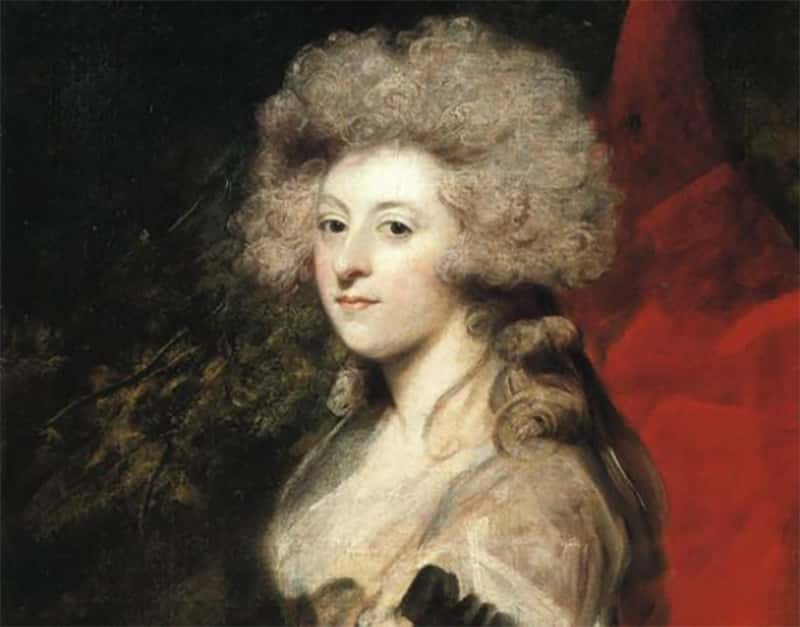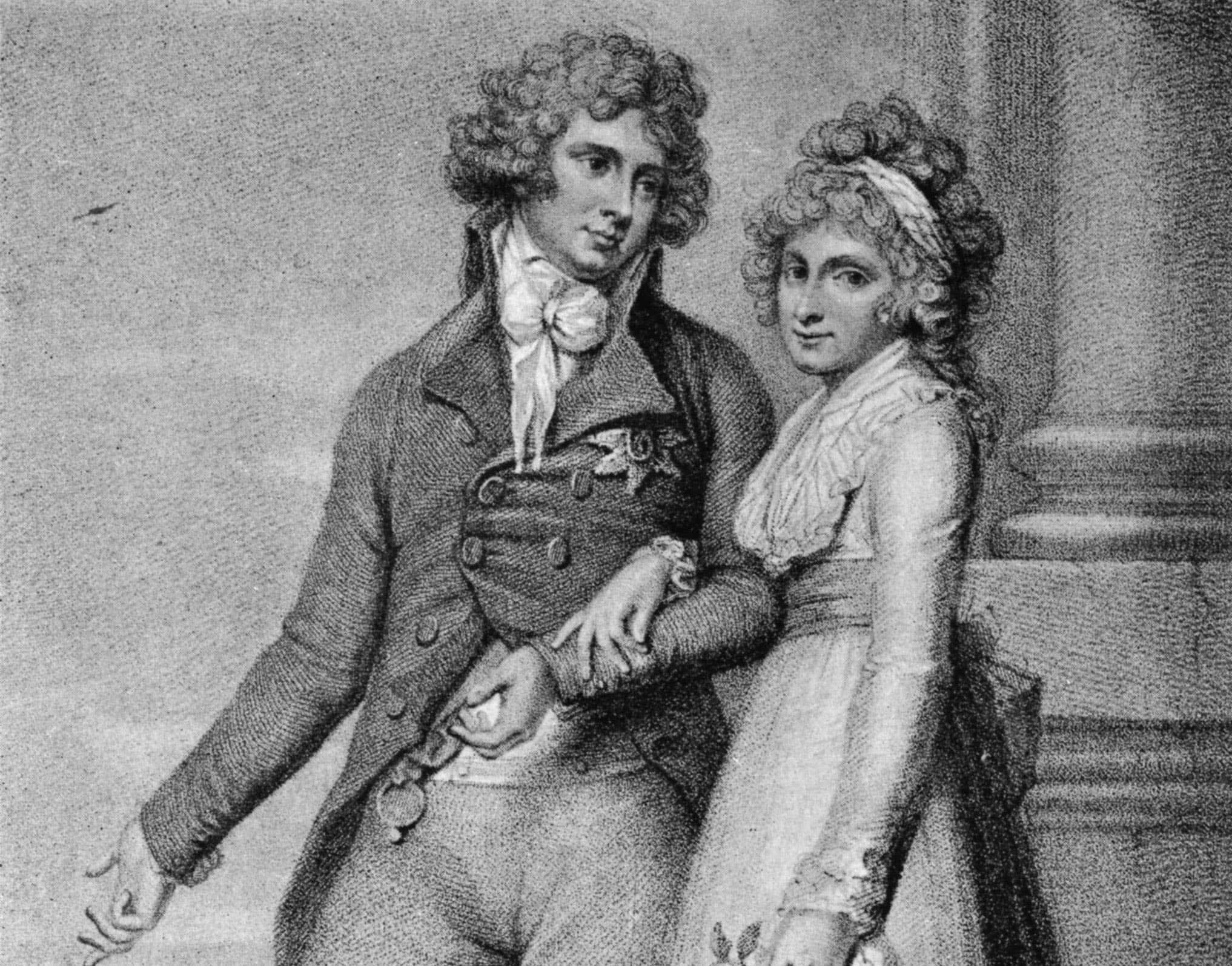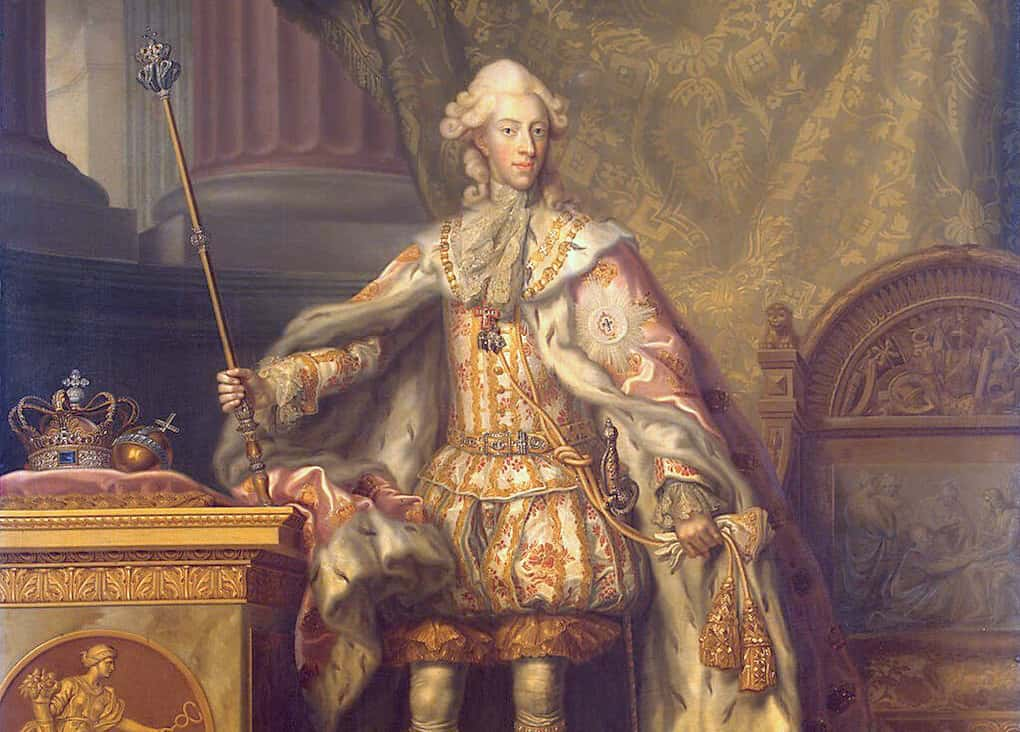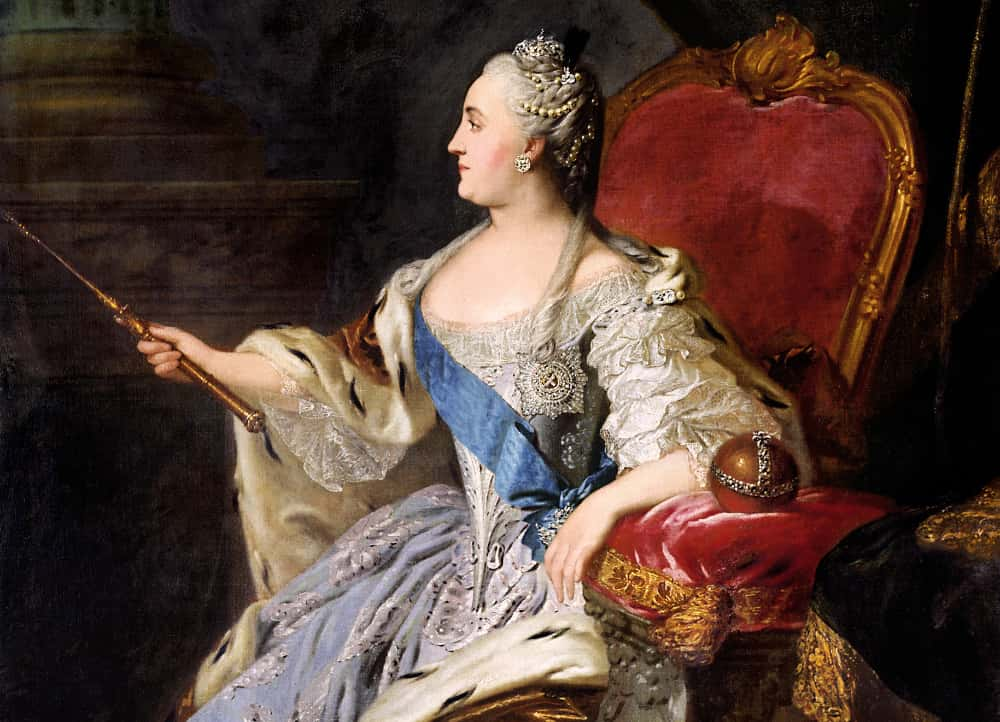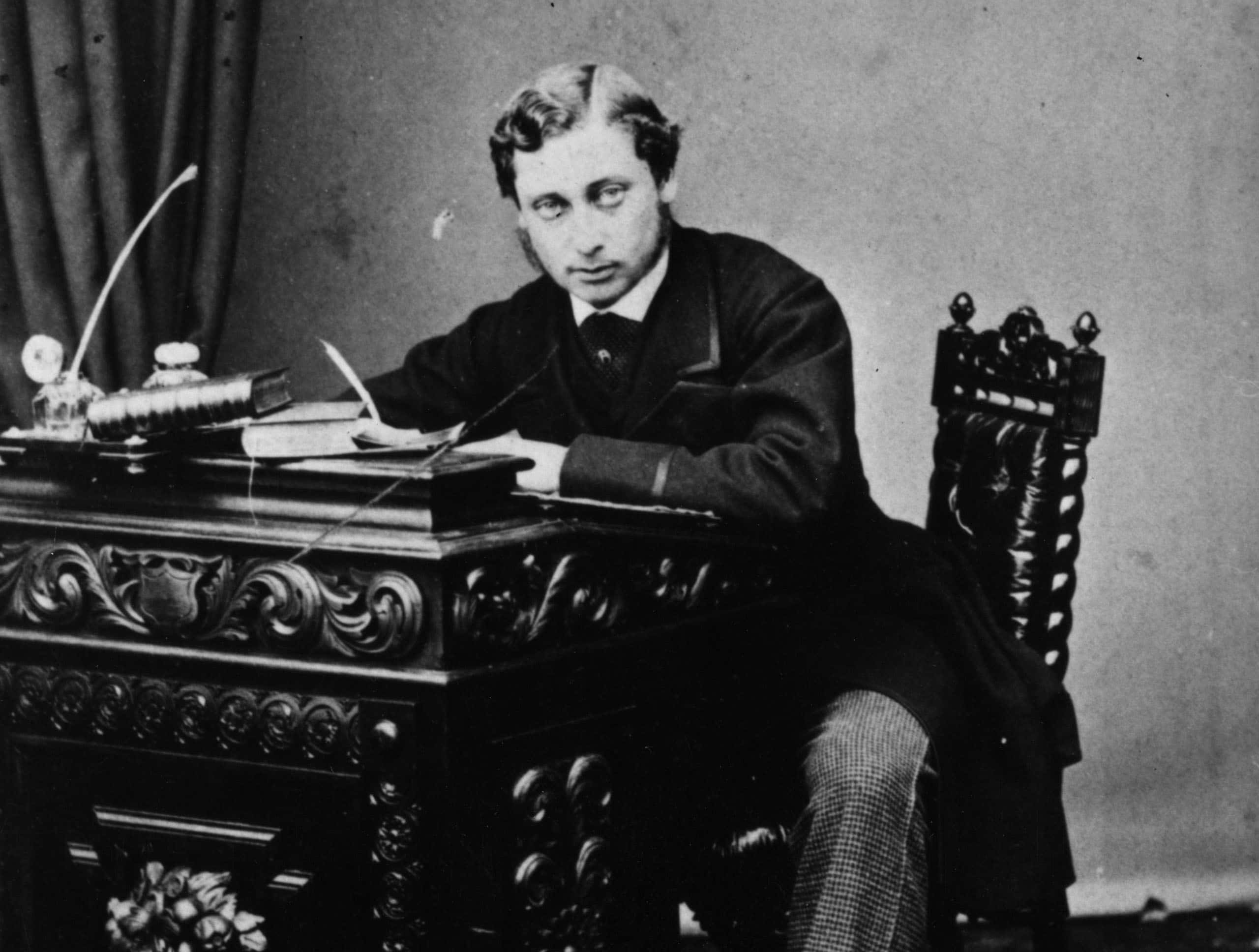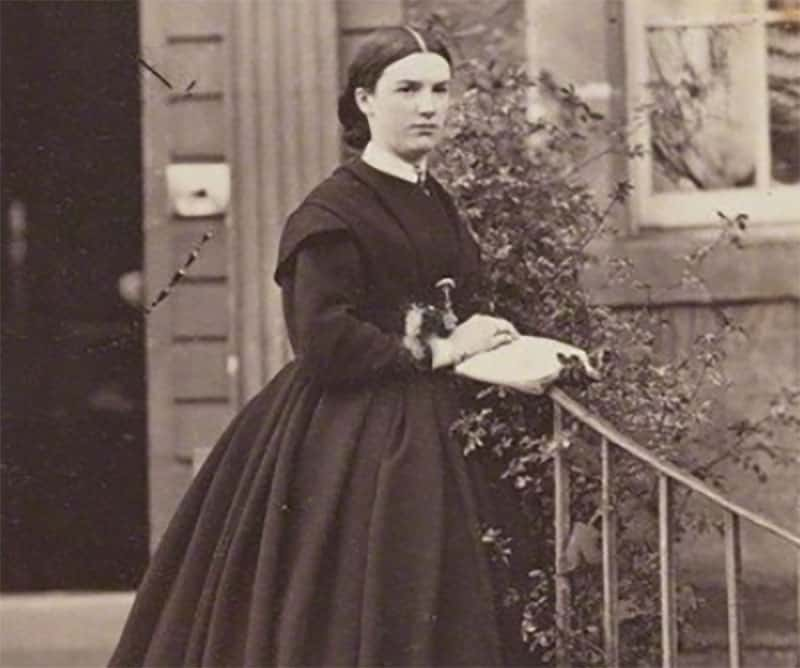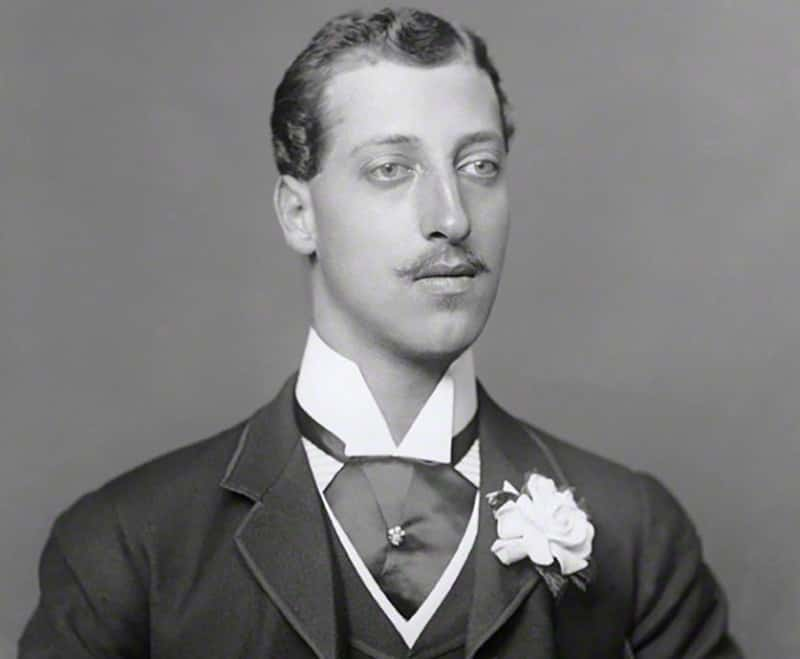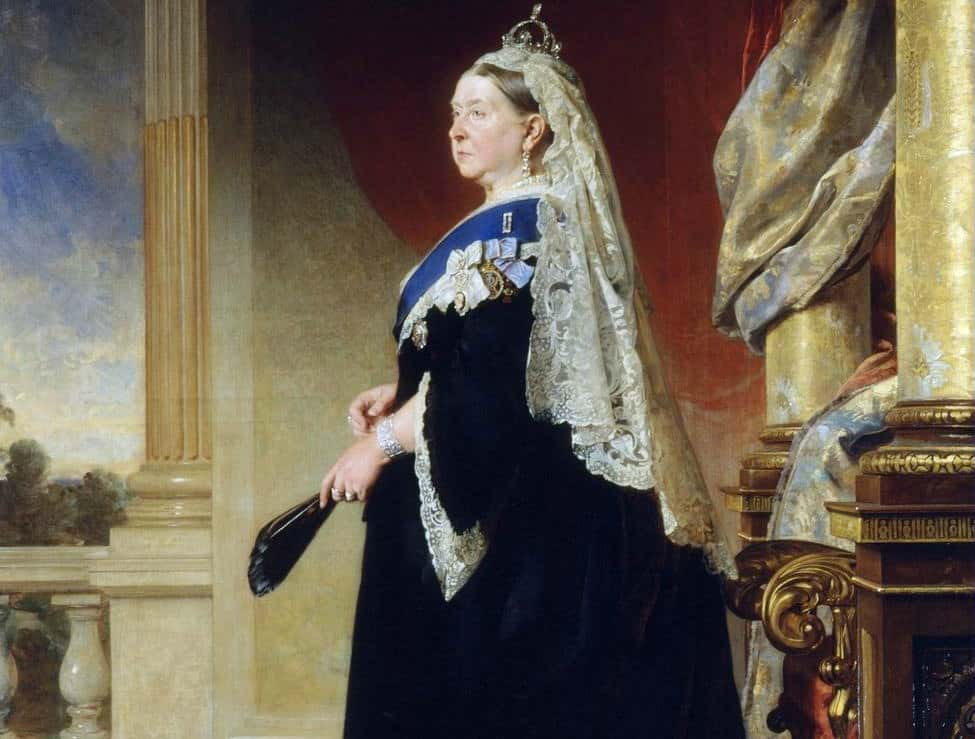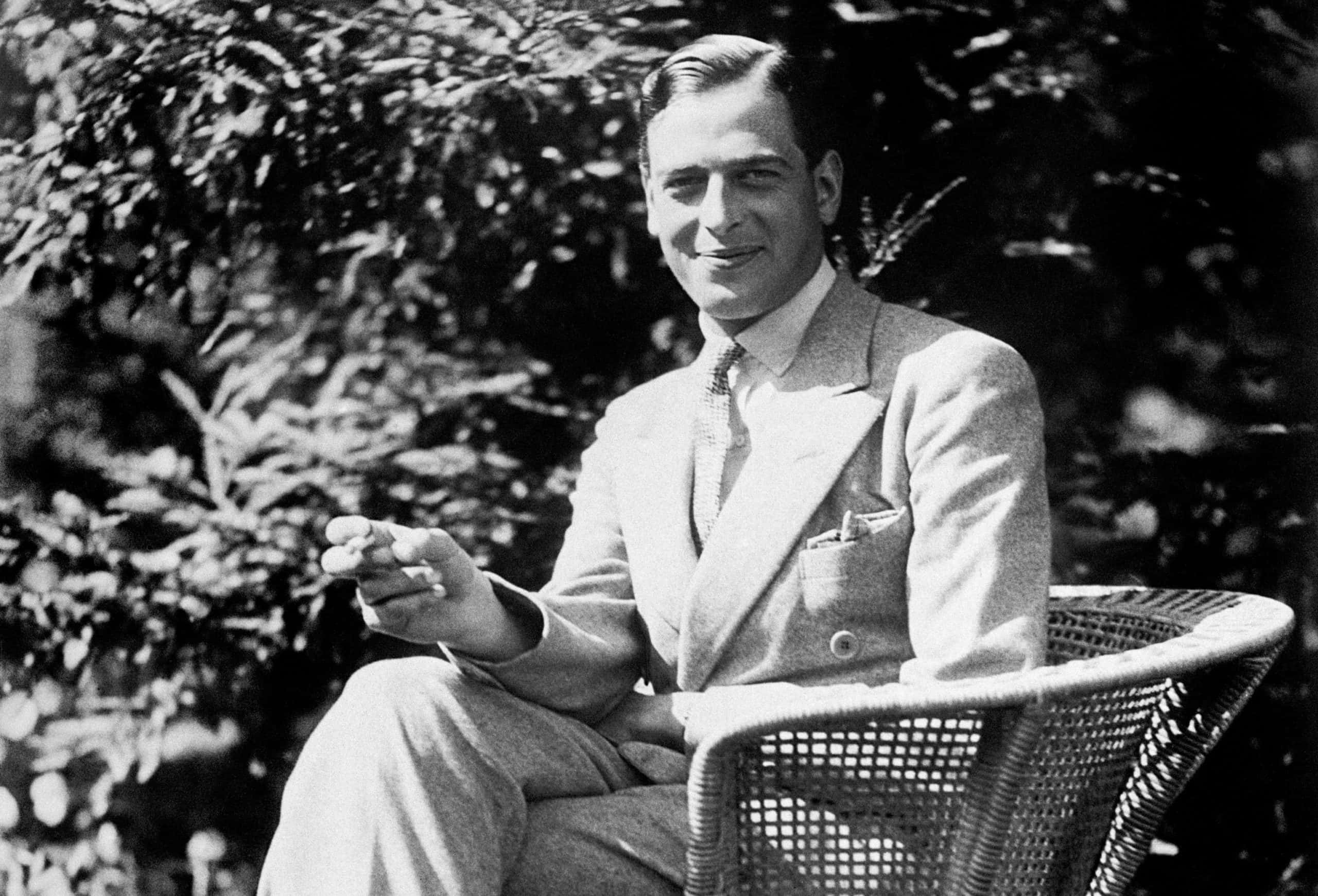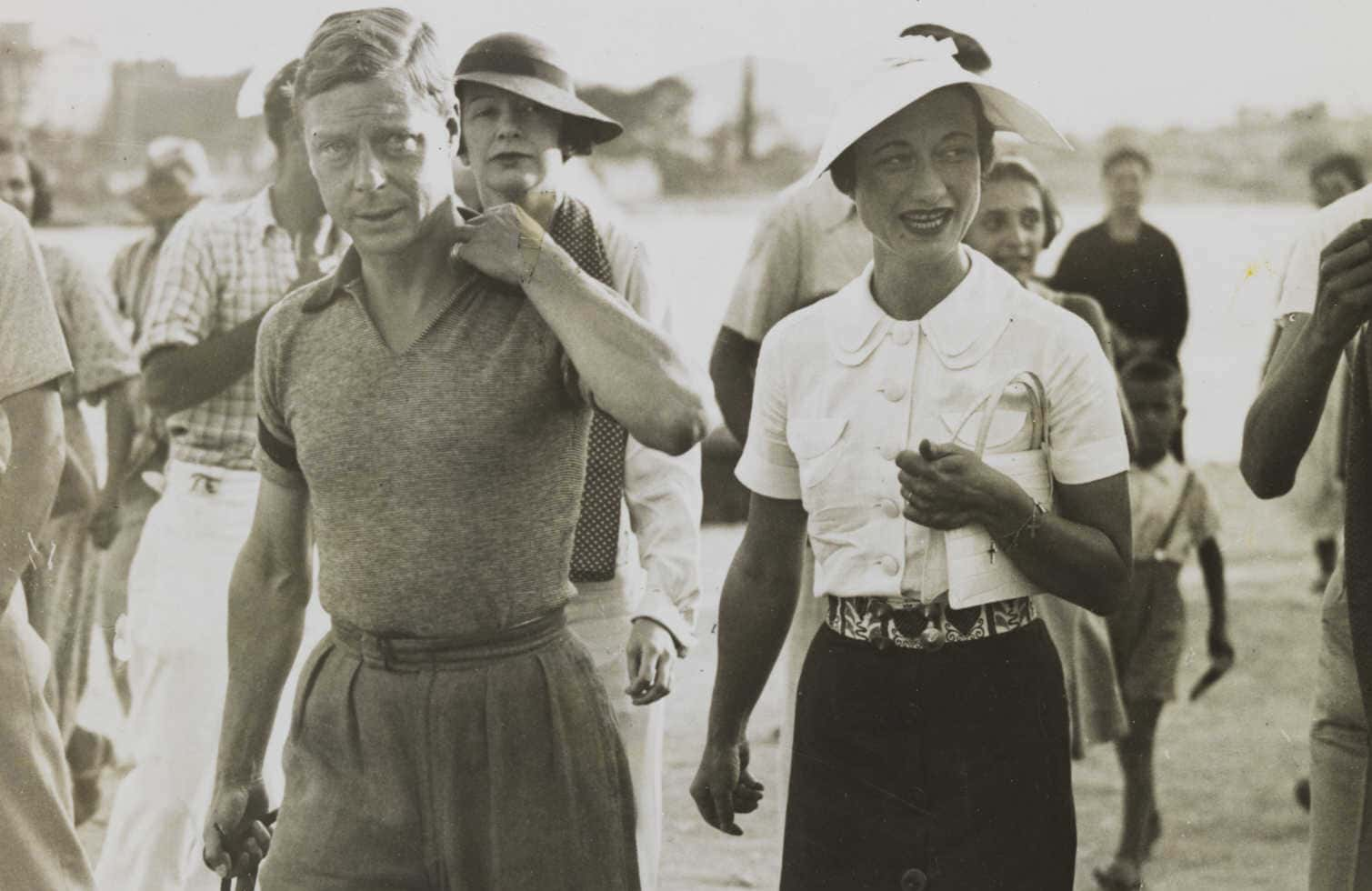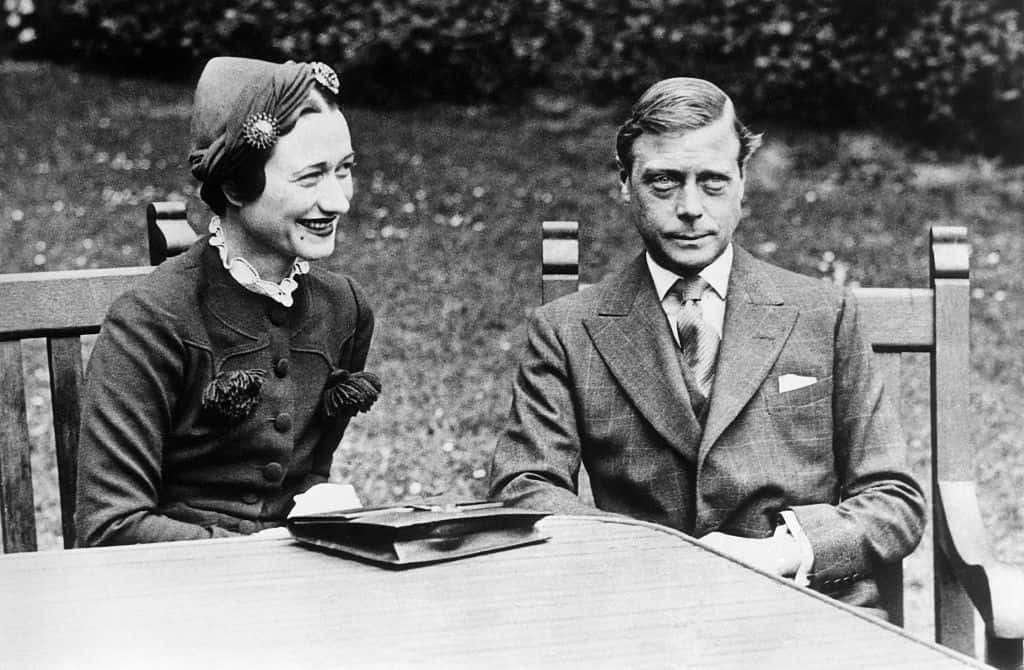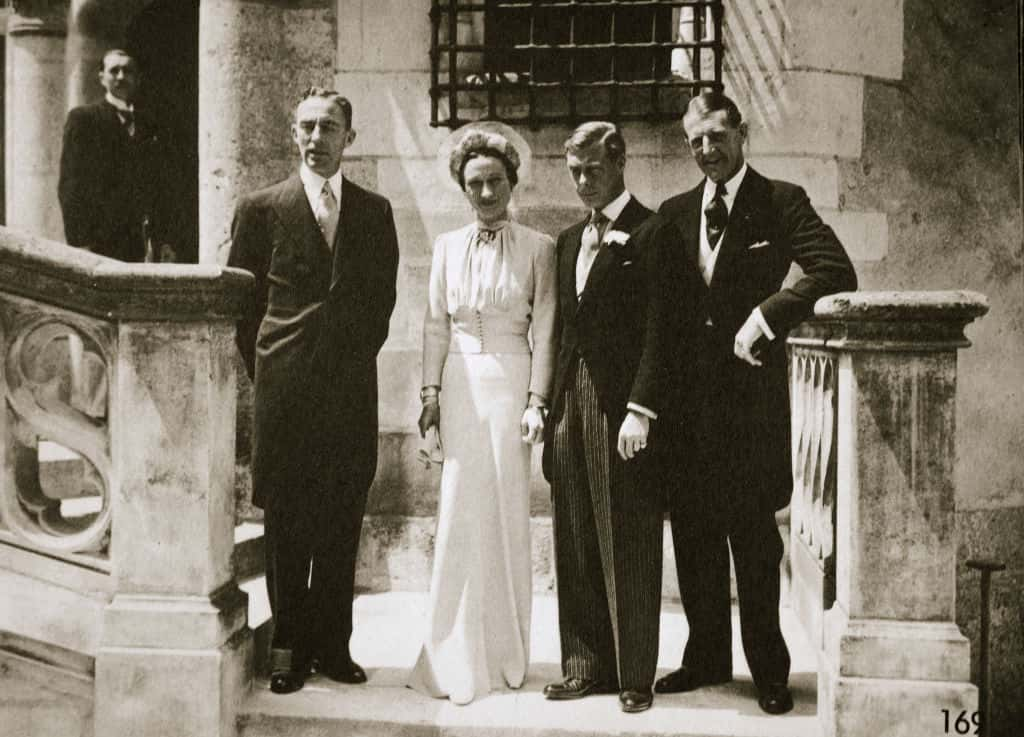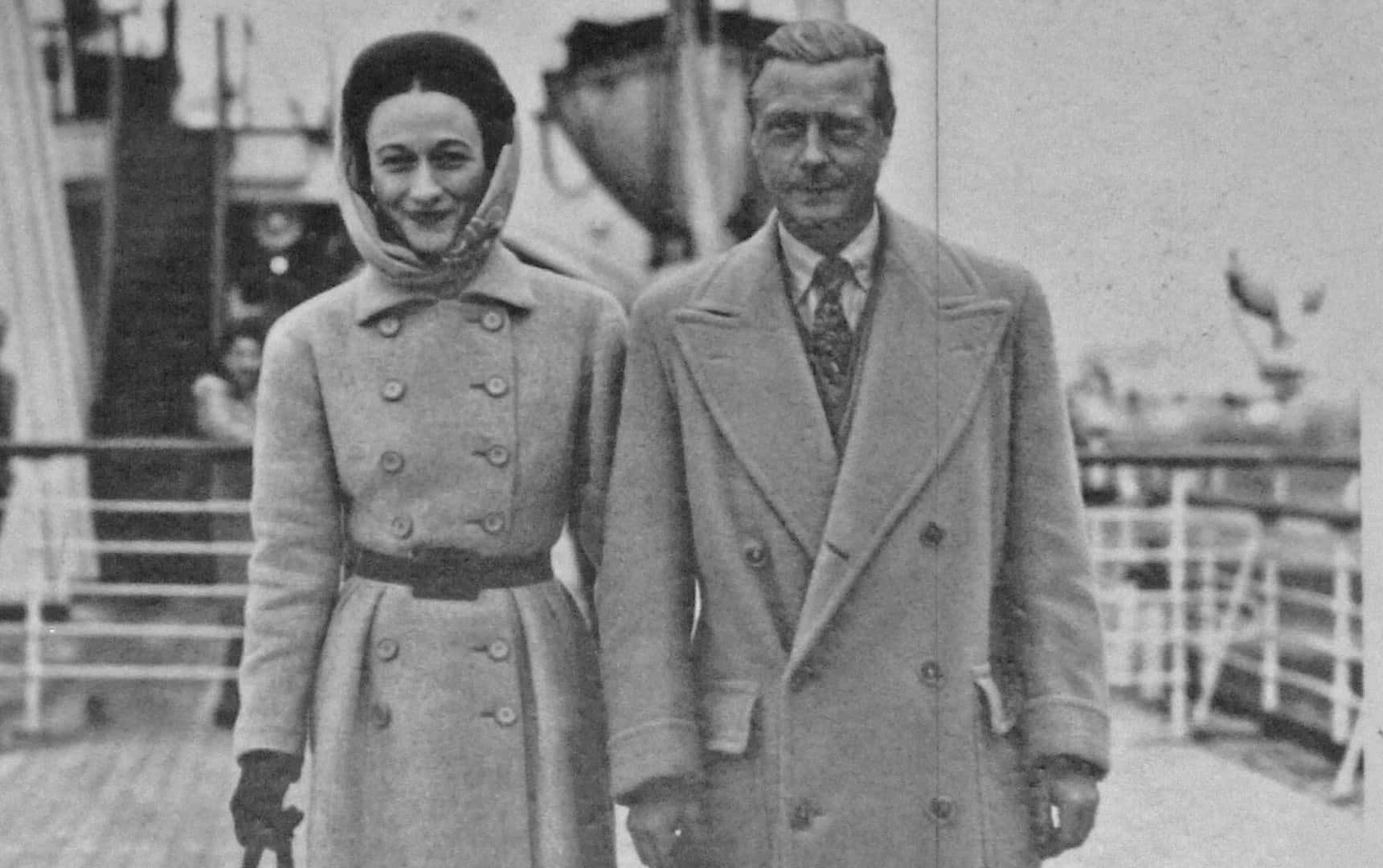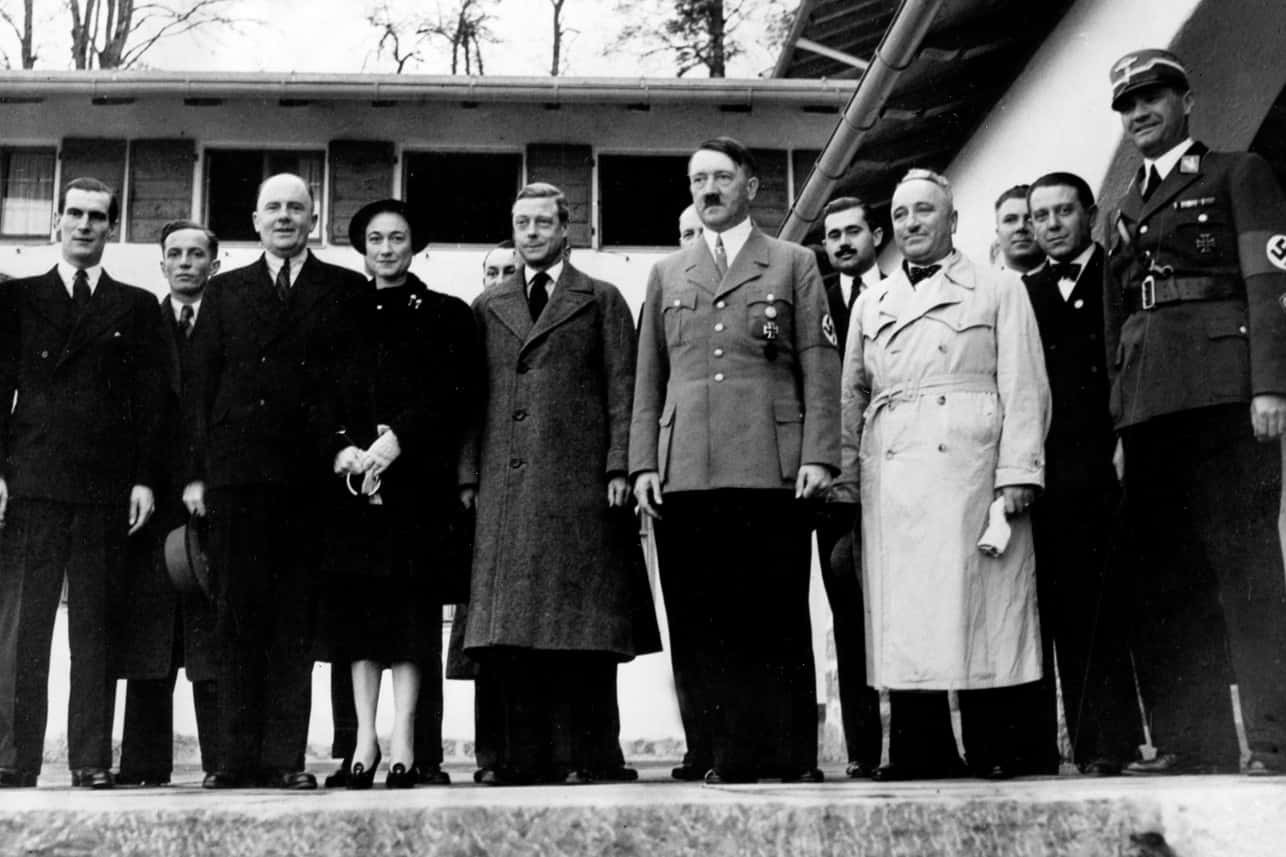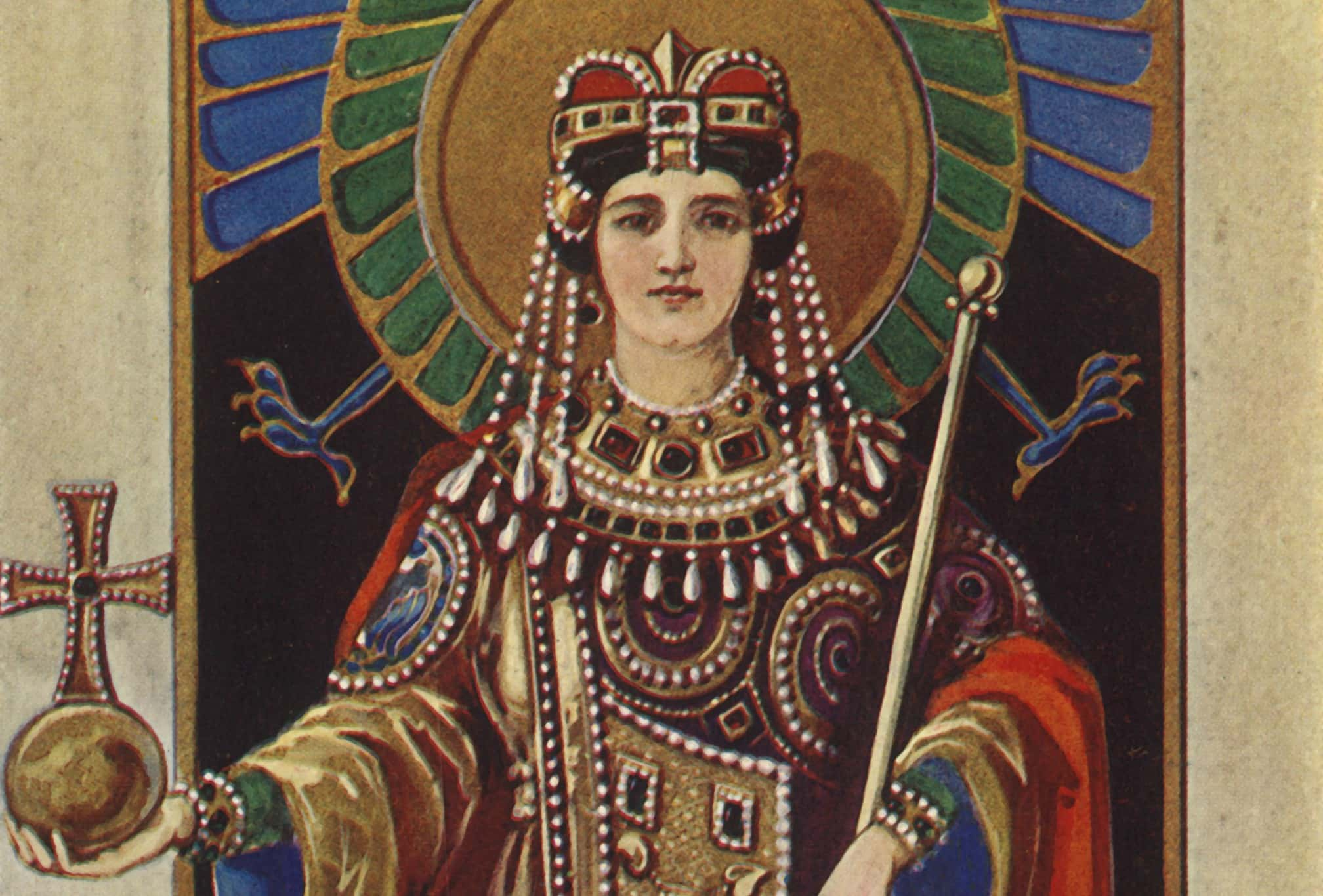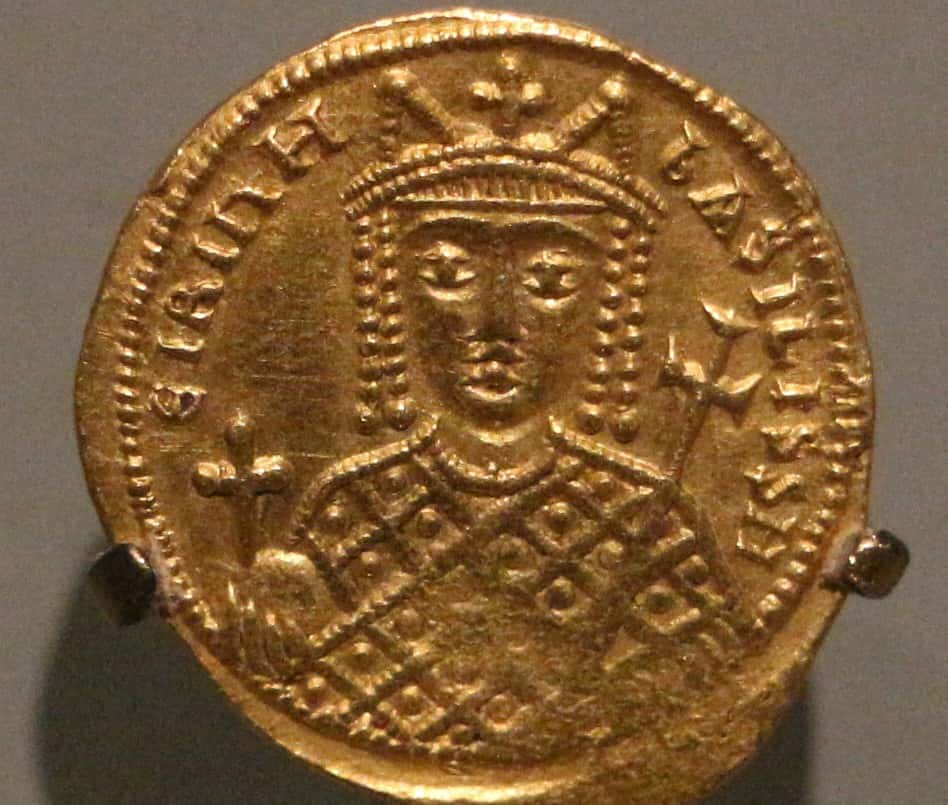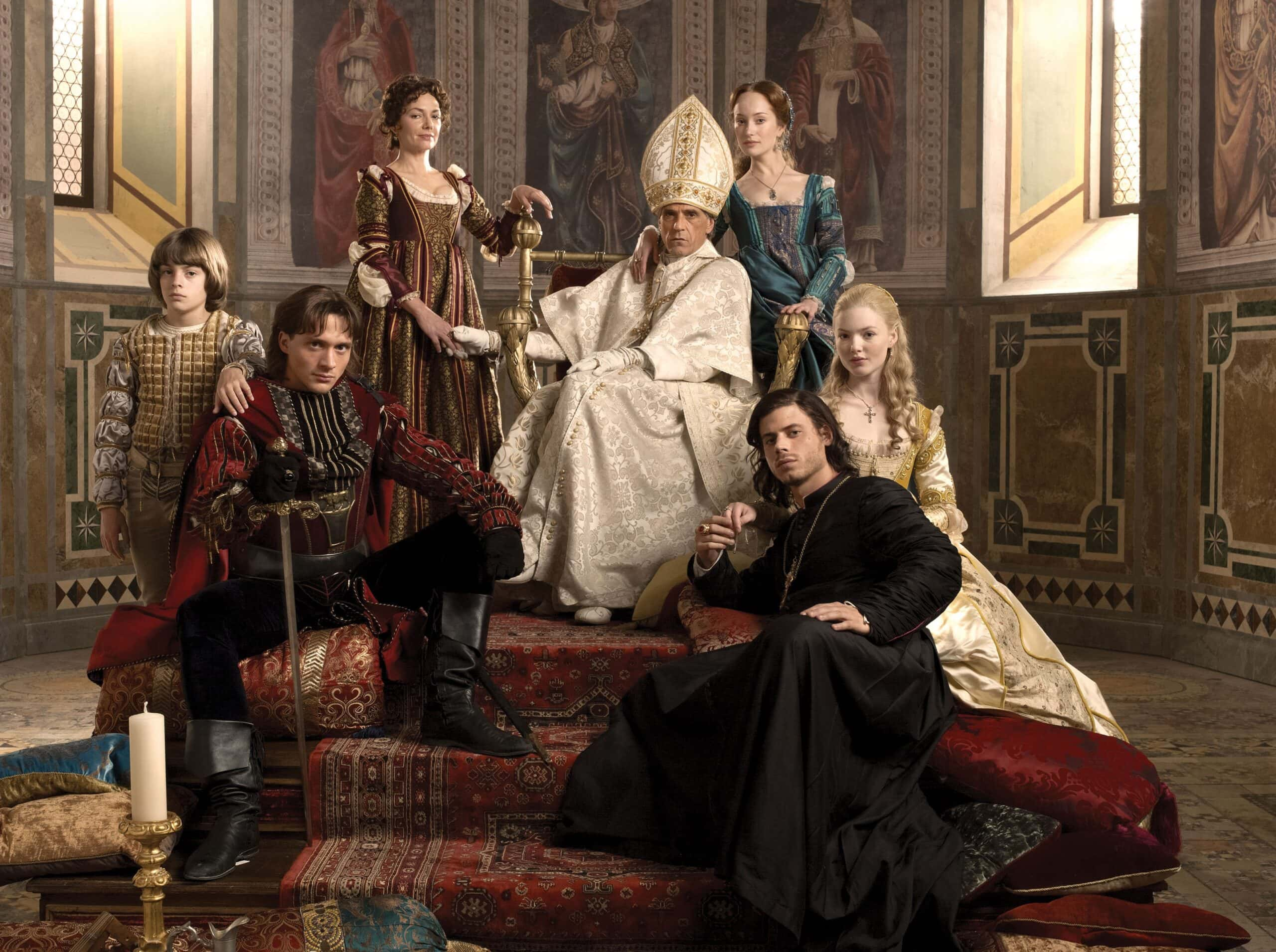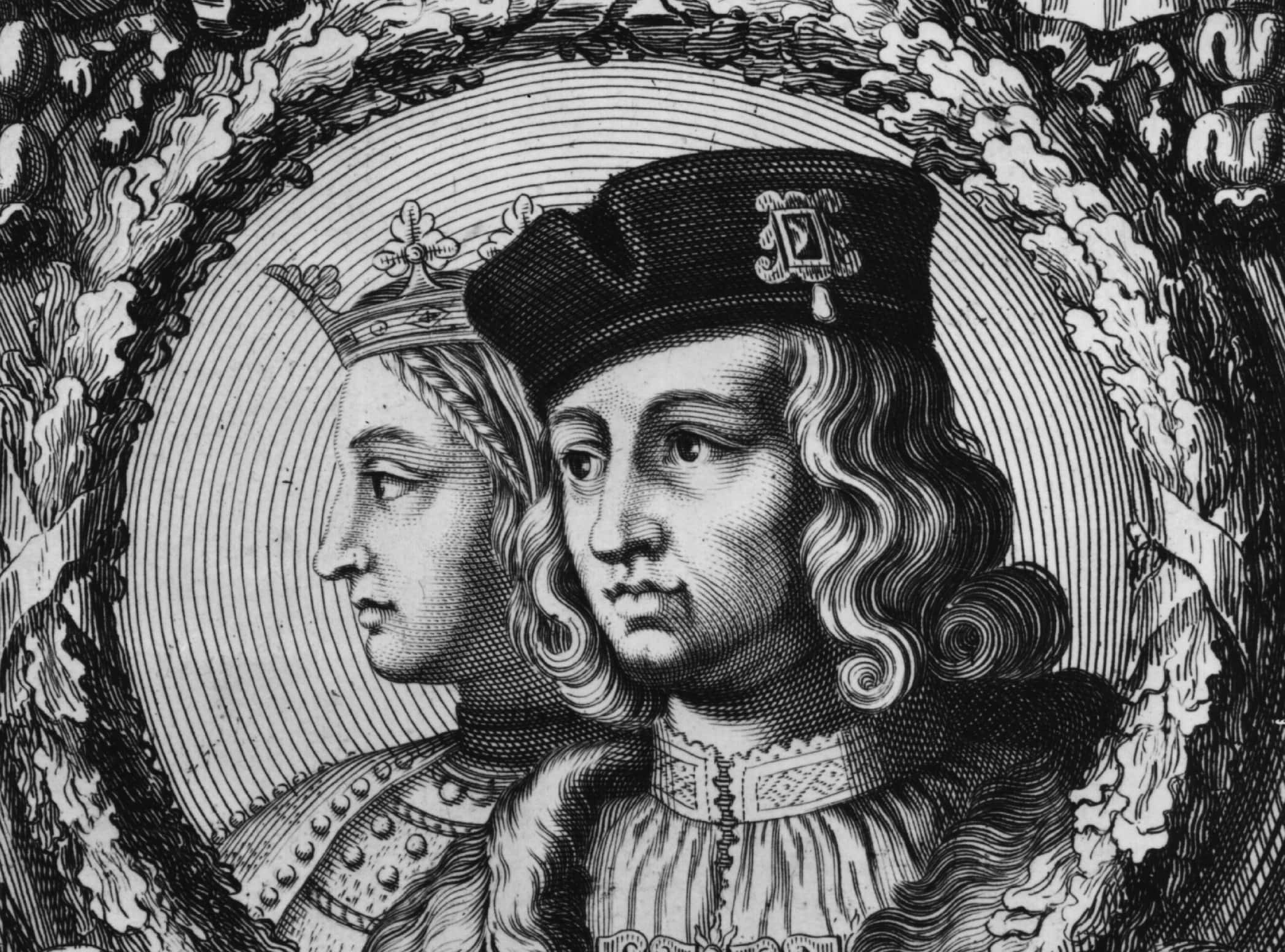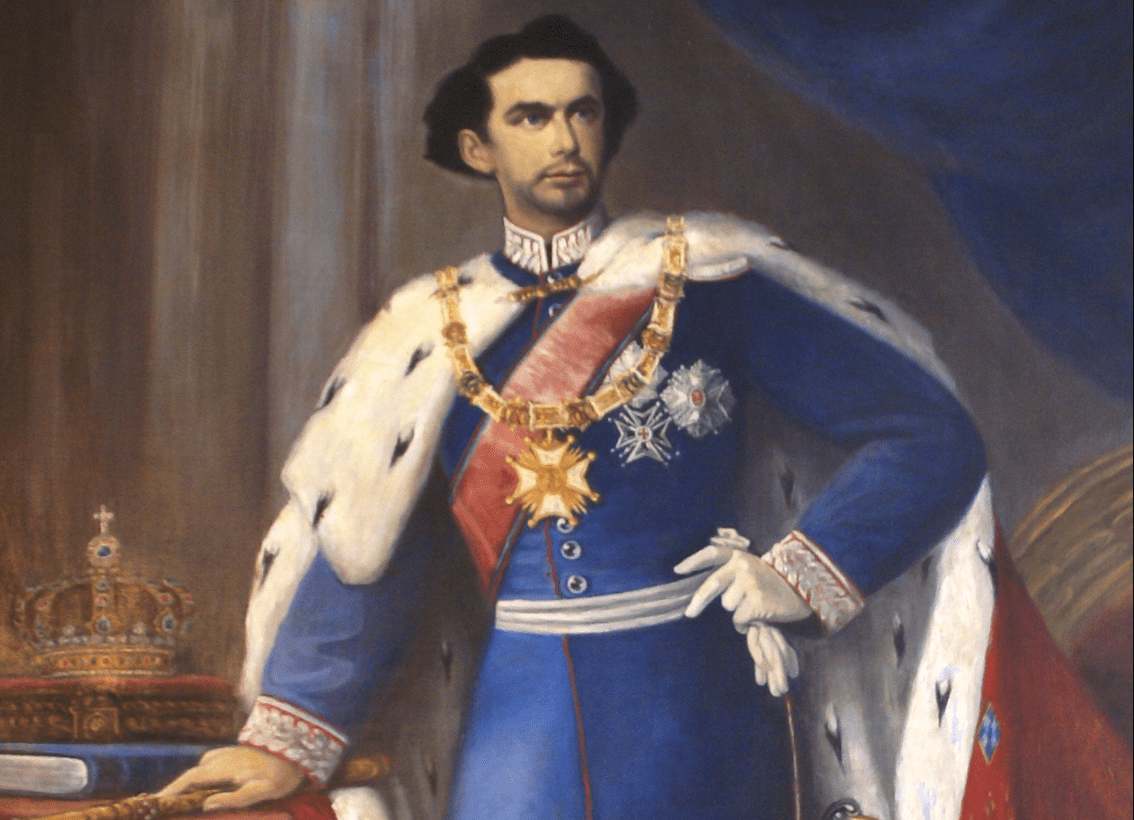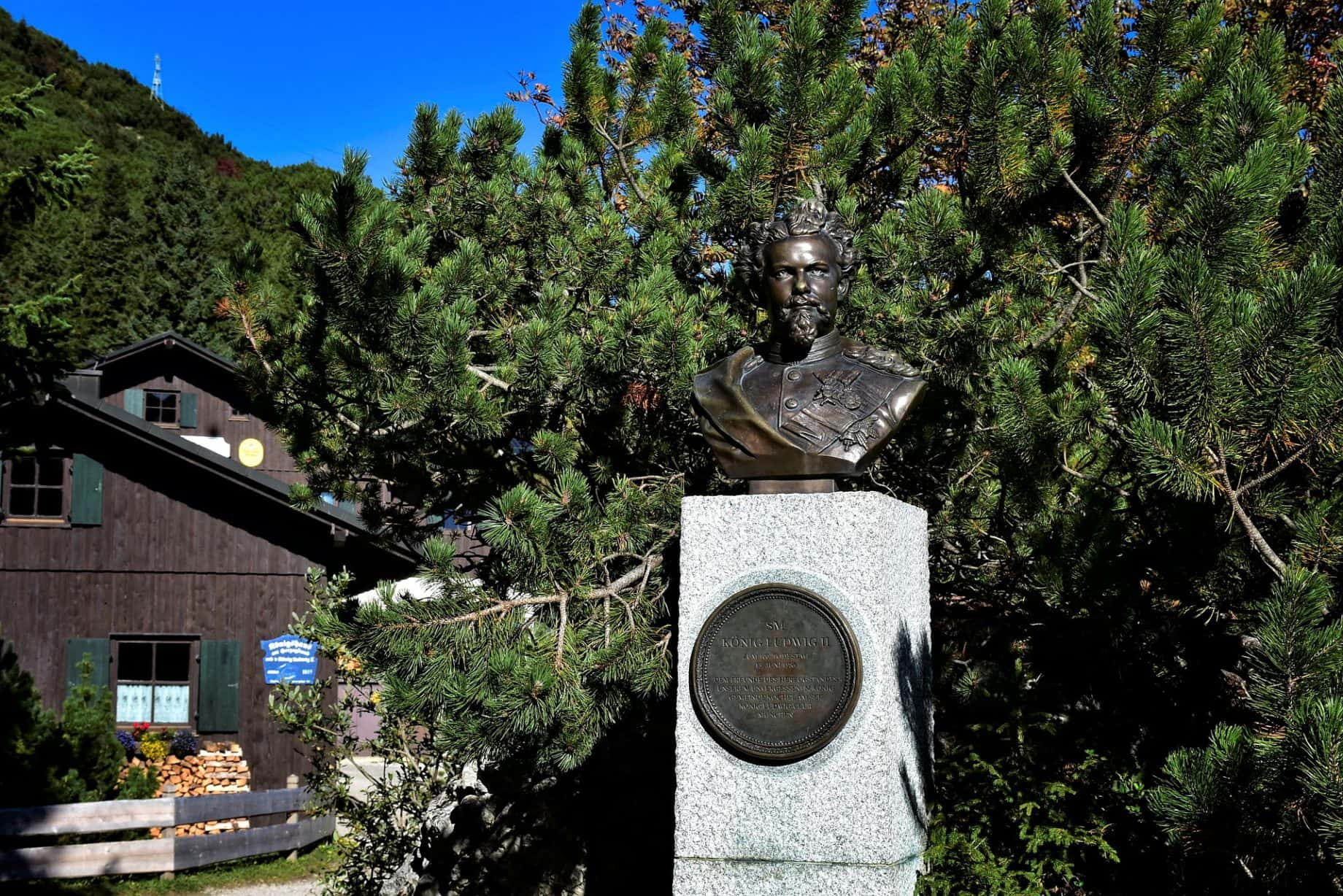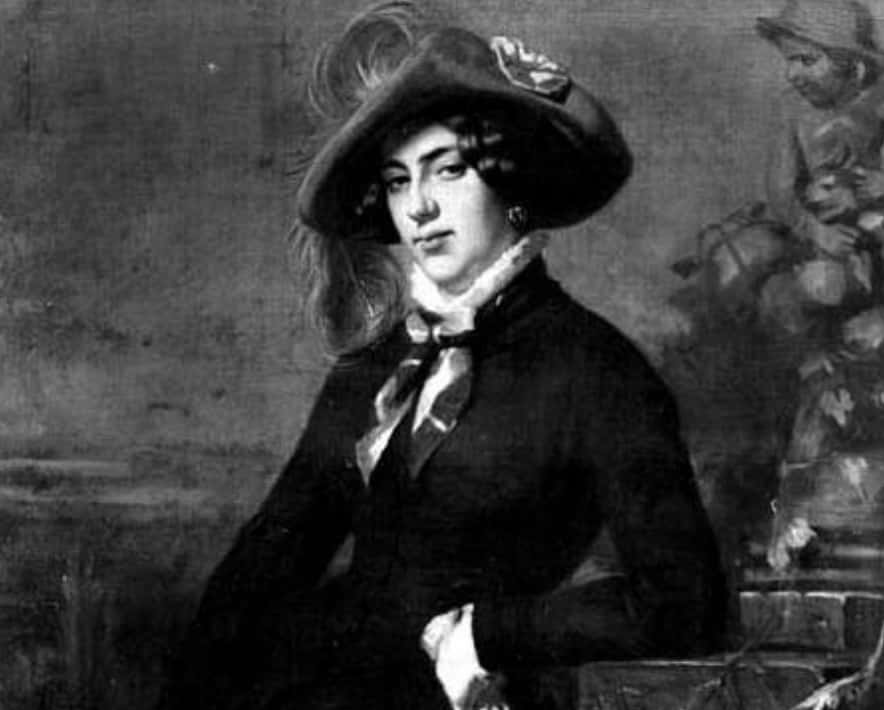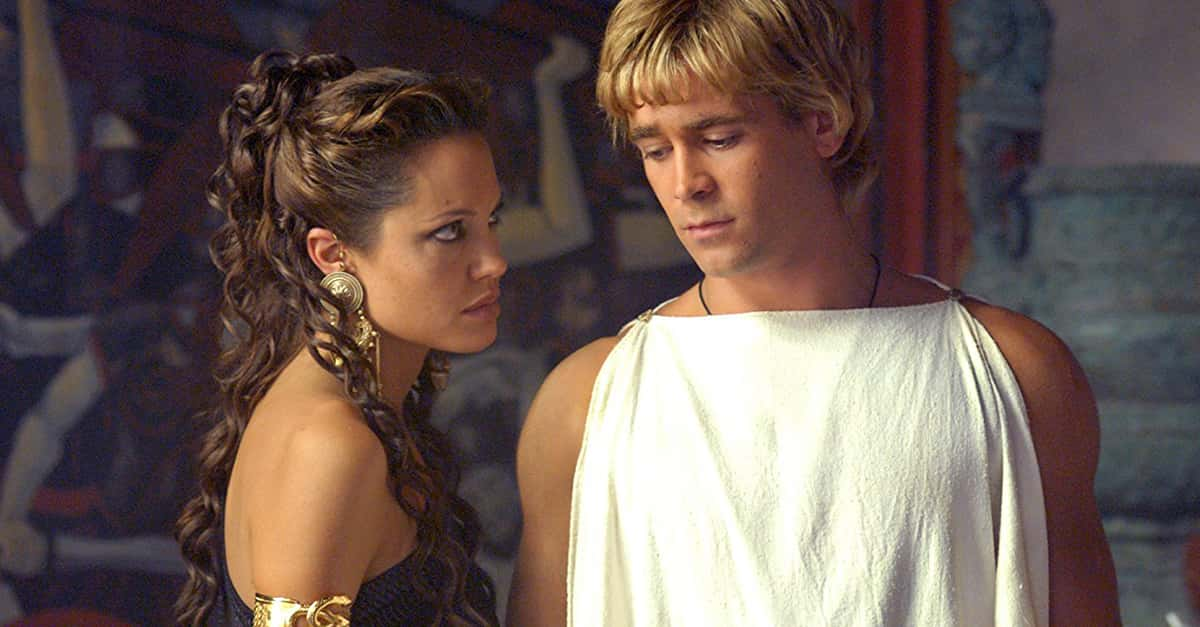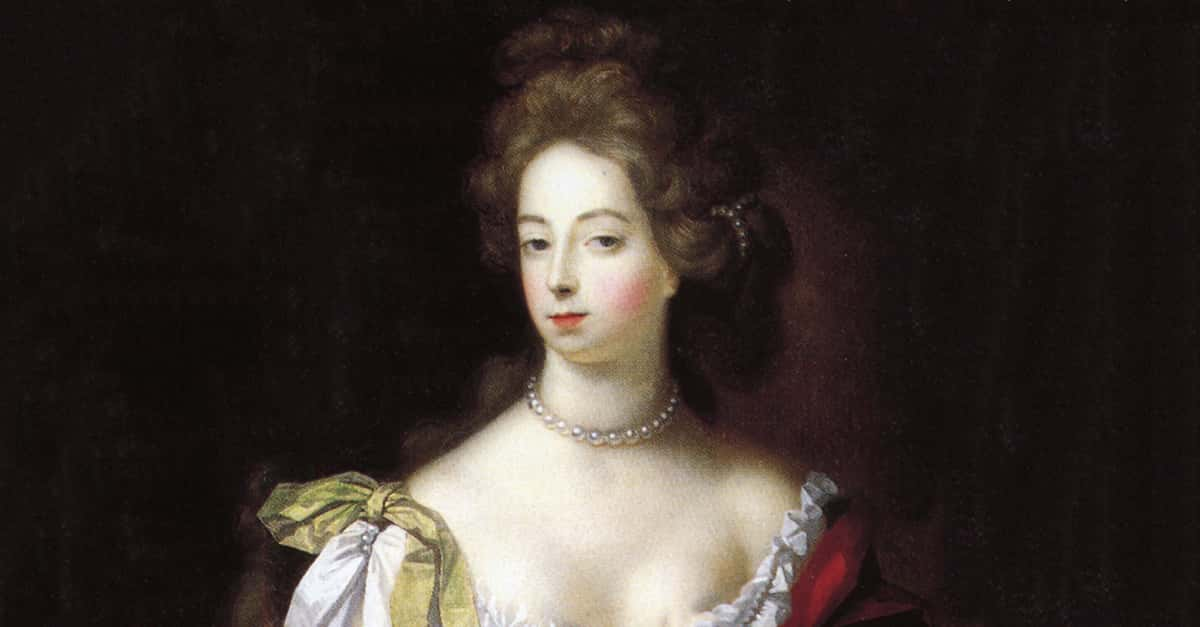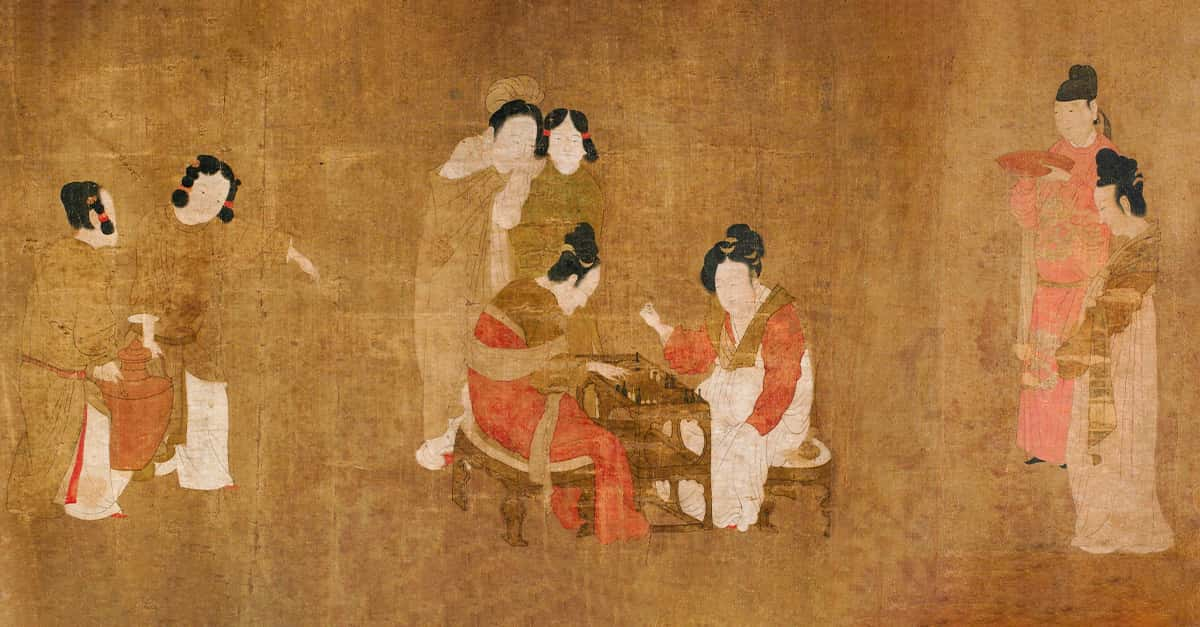"A lie has no leg, but a scandal has wings."—Thomas Fuller.
Absolute power corrupts absolutely. Kings and queens have unfettered power, untold wealth, and—in some cases—the belief that they are the embodiment of the will of the Almighty, if not the Almighty itself. Throw in a country of subjects who either live in deference to their ruler or wish to seize that power for themselves, and it’s no wonder that, throughout history, royal rulers have been our most reliable source for scandal. Here are 42 debauched facts about historical royal scandals.
Historical Royal Scandals Facts
42. Dear Old Dad
In 47 BC, Cleopatra showed up on Julius Caesar’s doorstep with a baby, which she said was Caesar’s. The story seemed believable—the baby was, after all, named “Caesarion”—but that would have caused political difficulties for Caesar, who was married at the time, and had already adopted an heir, Octavian. While Caesar allowed Cleopatra and her son to remain in Rome, he continuously denied the child was his and had a friend, Gaius Oppius, distribute a pamphlet “proving” Caesar wasn’t the father.
41. End Of An Empire
Caesarion would go on to rule as the last pharaoh of Egypt. Following Caesar’s death, Mark Antony had Caesarion formally recognized as Caesar’s son and granted him control of some Roman territories in the east. This infuriated Octavian and instigated the war which proved to be Antony—and Caesarion’s—downfall.
40. The Original Burning Man
A 1380 royal ball to celebrate the marriage of a lady in waiting turned into a gruesome scene when King Charles VI of France and four companions caught on fire. To celebrate, Charles and his buddies had dressed up in shaggy, woolly costumes and danced around, pretending to be wild men. Charles’ brother, the Duke of Orleans, drunkenly knocked over a torch, setting all five men alight. Charles was saved, but the other four noblemen perished while the assembled guests looked on in horror. When the citizens heard the news, they attempted to stage a revolt, more furious about the lavish decadence of the party than the deaths of the four noblemen.
39. The Sniper
King William II of England was not a very popular king, but he seemed to have no shortage of hunting buddies. It was on one of these hunting trips that King William wound up dead, shot through the heart with an arrow. William’s hunting partner, Walter Tirel, admitted to firing the arrow and claimed it was an accident. The haste with which Tirel—and the rest of the hunting party—fled the scene, and the fact that they didn’t bring the king’s body with them, led many to suspect William’s death was the result of a conspiracy. Tirel was, after all, the best archer of the bunch.
38. The Loophole
Following the death of Henry V in 1422, a law was passed which, in theory, would have prevented his widow, Catherine, from having any further children who might challenge Henry’s own son for the throne. The law required that Catherine get consent from an adult king to remarry. What the law failed to do was make any such marriages invalid. Catherine did remarry—to a Welsh servant, no less—and their ensuing offspring would go on to form the Tudor dynasty.
37. Loyal Servant
Catherine’s new husband, Owain ap Maredudd ap Tudur, literally fell right into her lap. He had been carousing and tripped while dancing. Owain continued to serve the Lancaster family long after Catherine’s death: he was executed by Yorkists at age 60 following the Battle of Mortimer’s Cross.
36. Marrying Down
Cecily of York was the sister-in-law of Henry VII. She was also married to Henry’s uncle, Viscount Welles. But when the Viscount died, Cecily remarried Thomas Kyme, a humble country squire from Lincolnshire. Henry was furious—an unmarried sister-in-law could have been a good diplomatic bargaining chip—and he seized all Cecily’s property and banished her from his court.
35. Difficult Divorce
The oft-married Henry VIII was no stranger to controversy. In his obsessive pursuit of a male heir, Henry frequently flung caution and propriety to the wind, but his boldest move was divorcing his first wife, Catherine of Aragon. Henry’s insistence on divorcing Catherine of Aragon and marrying his mistress Anne Boleyn ran afoul of the Roman Catholic church. Henry was excommunicated, which ultimately led to the creation of the Church of England.
34. Losing Her Head
Anne Boleyn herself proved to be the source of much controversy. She was unpopular with the people for her role in Henry’s divorce and her treatment of Catherine of Aragon after, but when she failed to produce a son for Henry, he made plans to get rid of her. A slew of men—including Anne’s own brother, George—were accused of committing adultery with Anne Boleyn. All denied the charges. Nevertheless, Anne was beheaded for adultery, incest, and treason.

History's most fascinating stories and darkest secrets, delivered to your inbox daily.
33. The Sex Addict
Ibrahim I of the Ottoman Empire was the last heir of his line. As such, it behooved his supporters to keep Ibrahim’s mind on procreation. Unfortunately, their efforts worked too well, and Ibrahim became a full-on sex addict. His orgies and affairs shocked the empire, and rumors spread that “Ibrahim the Mad” even had a harem of 280 women drowned so that he might have the pleasure of picking new women.
32. The Fast and the Furious
The court of Louis XIV was the site of many affairs and debauched events, but nothing scandalized Louis more than a breach of etiquette. Louis had invited his court, including his wife, Marie-Thérèse, to join him in Flanders. His very pregnant mistress, Louise, had been given strict orders, however, to stay behind in Paris. Nonetheless, eager to prove her love to the king, Louise hired a carriage and set out, at points engaging in all-out drag races with the Queen’s own carriage. Louise arrived first at Louis’ camp, but she was disappointed: Louis remarked only with a shocked “Madame before the Queen?!”
31. Fingers Crossed
King George IV was a famous scoundrel; stories of his indiscreet affairs, blackmail, and untold numbers of illegitimate children could fill this whole list. But it is his relationship to the wealthy widow Maria Fitzherbert that takes the cake. After he wrote her a 42-page letter in which he threatened to kill himself if she didn’t sleep with him, Maria relented on the condition that she and George get married, which they did in a secret ceremony. Luckily for George, Fitzherbert was a Catholic, thus rendering the marriage invalid, preserving his position as heir to the throne of England, and freeing him up to marry his cousin, Caroline of Brunswick.
30. Paging Nicholas Sparks
From then on, George and Maria had a tumultuous relationship. She would demand money and threaten to go to the press if she didn’t get it, he would deny marrying or even knowing her—it was a real “will they, won’t they” kind of thing. When George died, however, he asked to be buried with a small miniature of Maria; it was soon discovered that he had saved every one of her letters.
29. Rough Night
In retrospect, George’s attachment to Maria should have been obvious. Contemporary accounts of his wedding depict him breaking out into fits of tears, and getting so drunk he had to be held up at the altar.
28. Family Doctor
Christian VII ruled Denmark from 1788 to 1808. At least, that was the official line. For most of his reign, Christian was battling mental illness, incapable of running the nation. When the king was incapacitated, the work of running the country usually fell to his wife, Caroline Matilda, and whoever else happened to be on hand. The king’s physician, Johann Friedrich Struensee, was around a lot. Like a lot. Struensee was in fact practically running the country himself. And he was actually doing a pretty good job: he helped pass significant reforms like the abolition of torture and freedom of the press. That same press would soon point out that Caroline Matilda’s new baby looked kind of familiar—really familiar if you knew what Johann Friedrich Struensee looked like.
27. The Head Surgeon
Struensee and Caroline Matilda secretly ran Denmark for close to a year, but their reforms made them many enemies. Eventually, the affair was brought to the attention of the King, who, despite the new laws on torture, had Struensee’s hands cut off. And then his head.
26. A Load Of Horse****
According to one story, Catherine the Great was crushed to death by a horse in the middle of a sexual act. While the story gained popularity among Catherine’s detractors, historians confirm it was just a myth meant to discredit the Tsarina. Catherine the Great actually died of a stroke.
25. Not A Touching Story
In 1880, Queen Sunanda Kumariratana was sailing to her summer palace when her boat capsized and she drowned. There were many witnesses, but none dared save her: to touch the queen was a capital offense.
24. The Playboy Prince
The Victorian Era: proper, prim, sexually repressed. The Victorian code of morals was not a good suit for Victoria’s eldest son, the future King Edward VII. A notorious playboy who carried out affairs with the most famous actresses of the day, Edward earned the name “Edward the Caresser.” When Edward got caught sneaking an actress into an army camp, his father, Prince Albert, traveled to Cambridge to lecture Edward on propriety.
23. Turning A Blind Eye
Edward’s lowest moment came when he was made a central figure of the Mordaunt divorce trial. Lady Mordaunt had given birth to a daughter who, by all appearances, was blind. Fearing the child’s blindness was a complication of syphilis, Lady Mordaunt confessed to her husband that she had taken many lovers, including the Prince of Wales. Lord Mordaunt filed for divorce, but the court found Lady Mordaunt not mentally fit for the divorce to be granted, and she was sent to an asylum. Historians now agree Lady Mordaunt was suffering from post-partum depression. On a happier note, little Victoria Mordaunt would go on to regain her sight.
22. PAV
Edward's bad behavior seemed to be genetic. His son, Prince Albert Victor, Duke of Clarence and Avondale, was implicated in the Cleveland Street Scandal, in which it was discovered that several British aristocrats had solicited sex with several young telegraph boys. Claims of Albert’s involvement were never substantiated, but several letters exist alluding to the participation of “one very distinguished person (PAV)” who had to be protected. PAV may very well be “Prince Albert Victor.”
21. Queen Victoria’s Late Love
Queen Victoria took the death of her husband, Prince Albert, very hard. She even blamed his death on stress caused by their son Edward’s behavior. “The Widow of Windsor” made few public appearances after Albert’s death, but she did supposedly find love later in life, however, in the form of her servant, John Brown. Their close relationship was the source of much gossip in royal circles, and the Queen’s chaplain even claimed on his deathbed that he performed a secret ceremony between the two.
20. Break and Enter
John Brown may have paid a visit to Queen Victoria’s bedchamber, but he wasn’t the only one. Edward Jones, the gangly teenaged son of a London tailor, made a hobby of breaking into Queen Victoria’s room at Buckingham Palace. The Queen had caught him several times, and even carried out conversations with “the Boy Jones,” but his visits had to come to a stop when he was caught trying to steal the queen’s knickers.
19. The Forgotten Son
Prince George, the Duke of Kent, was dubbed “the forgotten son.” He was certainly someone the British royal family seemed eager to forget. George’s partying ways—including the use of hard drugs and very public affairs with both men and women—were a constant source of embarrassment to the crown. Their disapproval was so obvious that when George died in a plane crash in 1942, many suspected the royal family had planned it.
18. American Woman
Perhaps the biggest royal scandal of the 20th century came when the sitting King of England abdicated his throne. King Edward VIII took the throne in 1936, following the death of his father. There was just one problem: Edward was in love with Royal Scandals facts, a commoner from Baltimore who was already on her second marriage. This was a major no-no among the British aristocracy. It also conflicted with Edward’s role as head of the Church of England, which disapproved divorce—sorry, did they forget what they had been created for? Either way, as his entire cabinet said they would resign if he proposed, Edward’s insistence on marrying Wallis—as soon as her divorce finalized, of course—threatened to launch Great Britain into a constitutional crisis.
17. Hands Tied
As a compromise, Edward offered the idea of a morganatic marriage, also known as a left-handed marriage, which would have him remain king without extending any official title to Wallis. The British Parliament refused, leaving Edward with no choice but abdication.
16. Happily Ever After
Edward and Wallis were married in France in 1937. Not one member of the British royal family attended—they’d been forbidden from doing so by Edward’s newly-crowned brother, King George VI—and the Church of England refused to sanction the wedding. Edward and Wallis would remain in France, happily married, until Edward’s death in 1972.
15. The Hardest Working Man in Royalty
Thought the Edward/Wallis Simpson story seemed more like “great love story” rather than scandal? Well, it wasn’t all making huge sacrifices for love. After the abdication, Edward was given the title of Duke of Windsor and a relatively small allowance. While the French government exempted him from taxes, and the City of Paris provided him with a home which was essentially rent-free, Edward found his allowance too restrictive, and took to writing, affecting political favors, and trading currency illegally to make ends meet.
14. Friends in Low Places
And again, proving that a great love story isn’t everything: while Edward remained despised by the British royal family, at least one European ruler continued to treat him like royalty—Adolf Hitler. Edward was sympathetic to the Nazis during World War II, meeting with Hitler a number of times, and publicly advocating for a peaceful resolution between Great Britain and Nazi Germany. Some historians even believe Hitler had plans to reinstall Edward on the throne as a puppet monarch had the Nazis won the war.
13. Biblical Bad Boy
Herod the Great was king of Judea. Modern readers might recognize him as the King who wanted to kill Baby Jesus in the Gospel of Matthew. He was also accused of killing his brother in law, whom he had named a High Priest at the insistence of his wife, Mariamne. Suffice it to say, Herod had a bad reputation.
12. That’s Why He Called Her Honey
When you have a bad reputation—as Herod did—people are likely to say outrageous things about you. Things like, “Herod believed his wife Mariamne had committed adultery so he had her executed. But he still loved her, so he had her body preserved in honey and had sex with her for another seven years. Then he married a woman named Mariamne II.”
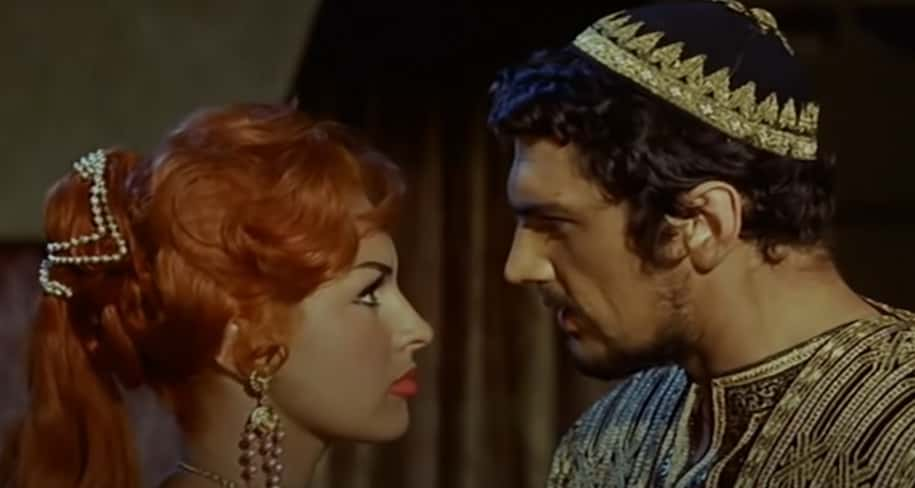 Herod the Great (1959), Vic Film
Herod the Great (1959), Vic Film
11. Sick of the King
Herod continued to serve as King, though his Roman emperors often considered removing him from the throne. He remained unloved by his people, who renamed the mysterious illness from which he died “Herod’s Evil.”
10. Mother of The Year
Irene of Athens clawed her way to power. An orphan, she was literally picked from a lineup to be the wife of Leo VI, emperor of the Eastern Roman empire. Leo died while their son, Constantine VI, was still too young to rule, which left Irene in charge. By the time Constantine came of age, Irene decided she kind of liked the whole “emperor” thing, and when he demanded his rightful throne, she had his eyes gouged out, leaving him to die of his wounds.
9. You Reap What You Sew
Irene got hers in the end: some Byzantine nobles conspired against her and placed her Minister of Finance, Nikephoros, on the throne. Irene was banished to Lesbos, supporting herself by spinning wool.
8. That’s Nuts!
The Borgias weren’t royalty in the strictest sense, but as one of Italy’s elite ruling families during the Renaissance, with very close ties to the Pope, they may as well have been. When the Borgias weren’t using their wealth and power to agitate Italy’s other ruling parties, they were throwing themselves lavish, decadent parties, such as 1492’s Banquet of the Chestnuts. Featuring 50 unclothed prostitutes—and one pope—the Banquet of the Chestnuts devolved into a full-on orgy, with prizes given to the guests who “performed” most frequently.
7. A Handsome Corpse
Henry VIII’s sister-in-law, Joanna, became the Queen of Castile following her mother’s death. Joanna’s ascension to the throne meant a significant loss of power for her father, Ferdinand II, who was king of Aragon, but only king-consort to Castile. His power was further threatened when Joanna married Phillip the Handsome, a member of the powerful Hapsburg family. It didn’t take long for Phillip to turn up dead; many suspected Ferdinand had him poisoned.
6. La Loca
Joanna was devastated by Phillip’s death, and began traveling the country with his coffin in tow, refusing to bathe or sleep without the coffin near here. Throughout Castile, she came to be known as “La Loca.” Her mental state deteriorated progressively for nearly 15 years, during which time Ferdinand II died and a power struggle for the kingdoms of Spain arose. Joanna’s son Charles I seized the throne and had Joanna committed to a monastery, where she spent the rest of her days.
5. The Fairy Tale King
King Ludwig II of Bavaria was known by his people as the Fairy Tale King. It was not a compliment. Rather than attend to the affairs of state, Ludwig spent all his time designing the admittedly magnificent Neuschwanstein Castle, a castle so ornate it was later used as the inspiration for Sleeping Beauty’s castle at Disneyland. Though he paid for construction with his own money and private loans, Neuschwanstein put Ludwig in debt to the tune of $204 million. Instead of providing him with a requested bailout, the Bavarian government opted to simply remove Ludwig from the throne.
4. The Height of Luxury
Built high atop Mount Säuling—at an elevation of nearly 7,000 feet—Neuschwanstein followed the Romantic style, drawing especially from the Middle Ages, but it was also fitted with modern conveniences like central heat and telephone lines. At the height of construction, the project employed 300 craftsmen. It was unsuitable for actual governing purposes and intended purely as a residence/playhouse for Ludwig, but in the end, he only lived in the castle for 172 days.
3. No Happy Ending
Removed from his throne, and declared insane by a team of psychiatrists, Ludwig holed up in Neuschwanstein with a small private army. It took two tries to arrest him, but he was finally removed from his beloved castle and put in the custody of psychiatrist Dr. Bernhard von Gudden. The final moments of Ludwig’s life remain shrouded in mystery: the day after his arrest, both he and Dr. Gudden were found dead in a lake near Munich. It was ruled suicide by drowning, but an autopsy later revealed that no water was found in his lungs and two bullet holes were found in his jacket.
2. The Acting Head Of State
King Ludwig II’s namesake, Ludwig I, didn’t do anything so outlandish as bankrupt his country building a castle, but he did have troubles of his own. Ludwig I fell deeply in love with a stage actress, Lola Montez, going so far as to make her a countess. Montez would wield her influence in a way some might call “kinda dictator-ish,” silencing dissidents and closing universities. When the people of Bavaria began to revolt, Ludwig I was forced to abdicate the throne, and Countess Lola was forced to flee.
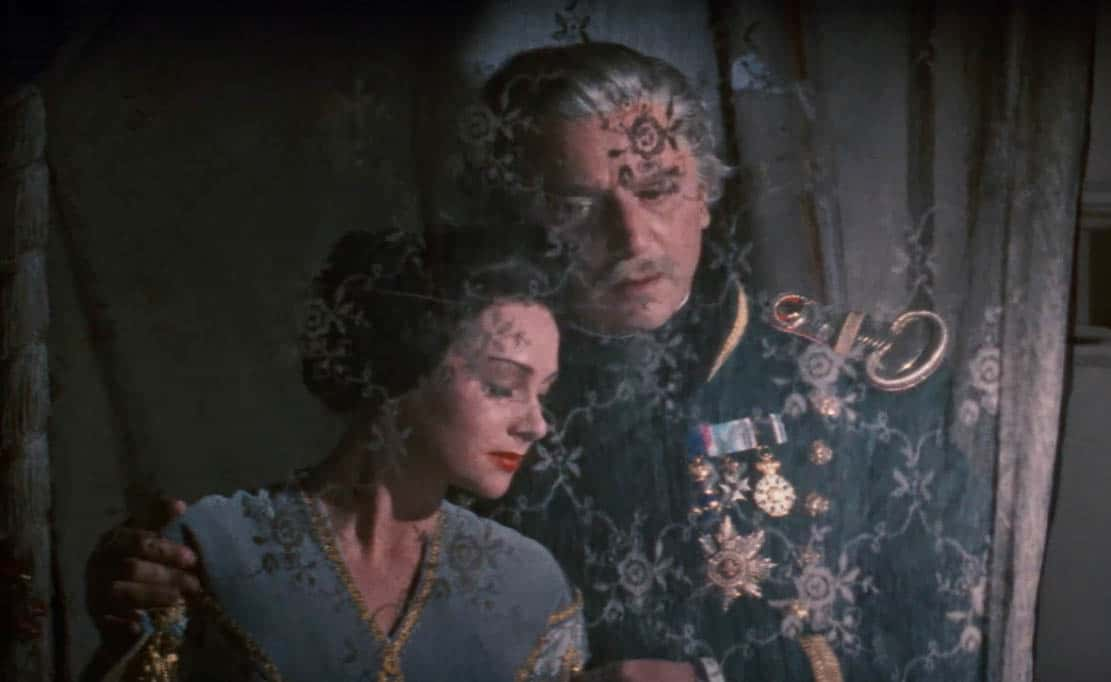 Lola Montès (1955), Gamma Films
Lola Montès (1955), Gamma Films
1. Too Much, Too Soon
Lola Montez’s next stop was America, where she resumed her acting career. All things considered, Lola’s time as dictator of Bavaria was just one event in a lifetime of scandals that included two marriages, a murder charge, and affairs with such 19th-century notables as Franz Liszt and Alexandre Dumas. Montez died at 39 years old, having lived more in those few years than whole cities of people do in their lifetimes.
Sources: 1, 2, 3, 4, 5, 6, 7, 8, 9, 10, 11, 12, 13, 14, 15, 16, 17, 18, 19, 20, 21, 22, 23, 24, 25, 26, 27, 28, 29, 30

